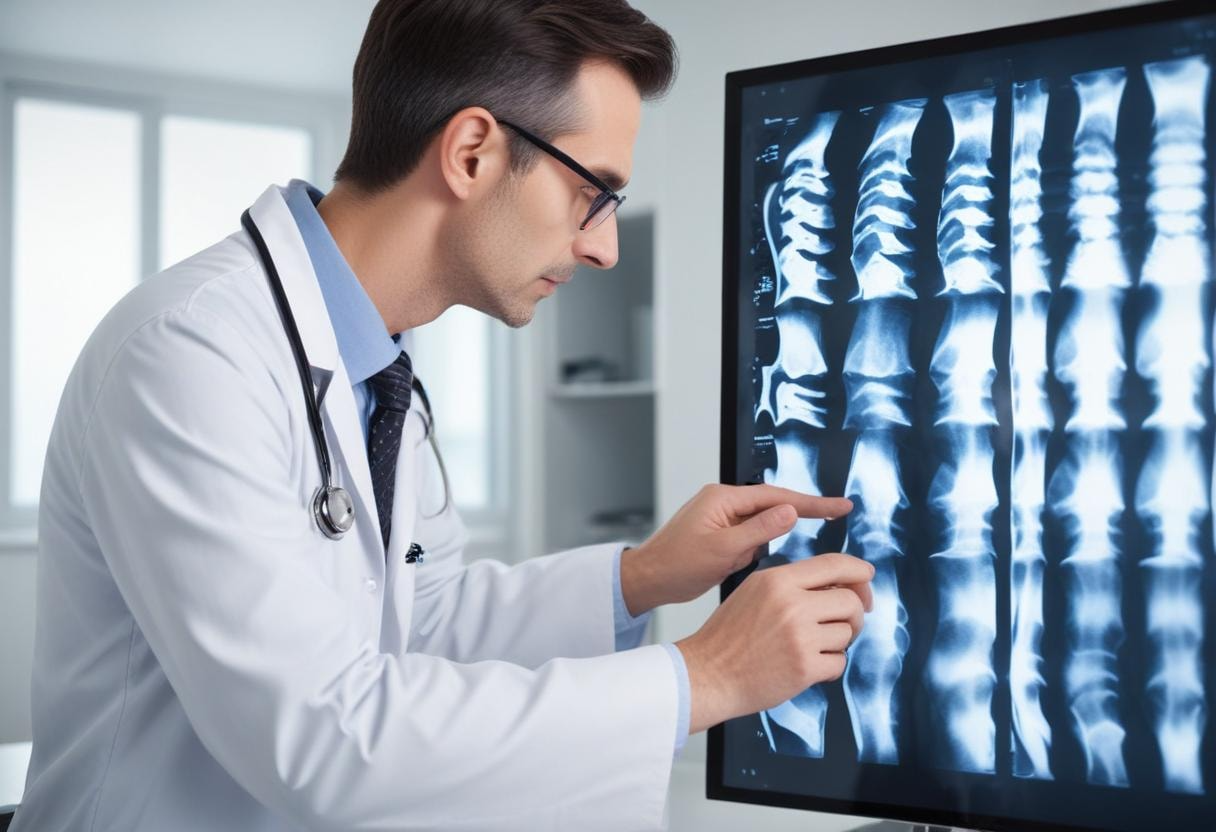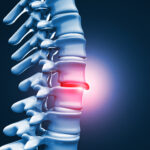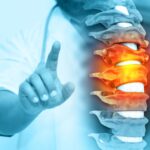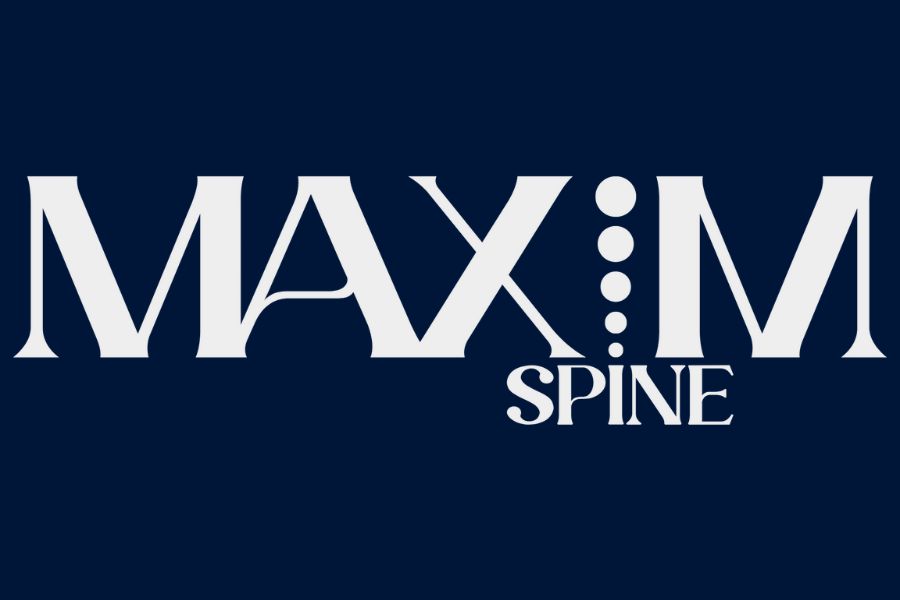
Understanding Specialized Cervical Disc Fusion Procedures
If you’re experiencing chronic neck pain and it doesn’t go away even with medication, there’s a good chance you have a damaged disc in your spine.
Having disc problems can affect your general health and even hinder you from performing day-to-day activities.
If this is the case, you may need to undergo specialized cervical disc fusion procedures to fix your problems. This blog post will guide you on how a complex spine surgery works and help you determine if you are a good candidate for it.
What is Cervical Disc Fusion?
Cervical disc fusion is the process of removing a damaged or herniated spinal disc and replacing it with a bone graft. The graft can come from your own bone (autograft), a bone bank, or another person (allograft).
The bone graft generates new bone to fill the disc space. It’s called disc fusion because once the bone graft heals, it effectively creates new disc material to “fuse” the adjacent vertebrae into a single, solid unit.
The fused vertebrae provide a more stable structure to your spinal column and help stabilize your neck. With your spine fully supported, this bone also now alleviates pressure on the nerve root and spinal nerves.
Who is a Candidate for Cervical Disc Fusion?
Anyone who experiences the symptoms below can be a good candidate for cervical fusion.
- Persistent Neck Pain: Candidates often have chronic neck pain that has not responded to conservative treatments such as physical therapy, medications, or injections.
- Neurological Symptoms: Those experiencing symptoms like numbness, tingling, or weakness in the arms or hands due to nerve compression caused by herniated discs, bone spurs, or other cervical spine conditions.
- Degenerative Disc Disease: Patients with noticeable degeneration of cervical discs that is causing pain and functional impairment.
- Cervical Instability: Individuals with instability in the cervical spine due to trauma, degenerative changes, or congenital conditions. transforaminal lumbar interbody fusion herniated disc blood clots metal plates fusion cage breathing tube new bone growth donor bone
If you’re unsure about whether you qualify for cervical disc fusion, it’s best to talk to an orthopedic surgeon and discuss your symptoms.
Risks and Complications of Cervical Disc Fusion
As with any surgical procedure, there are risks and complications associated with cervical disc fusion surgery. These are:
- Infection: Potential for postoperative infection.
- Nerve Damage: Risk of nerve injury, leading to pain, weakness, or numbness.
- Swallowing Difficulties: Temporary or, rarely, permanent dysphagia.
- Hoarseness: Temporary or permanent changes in voice due to recurrent laryngeal nerve injury.
- Adjacent Segment Disease: Stress on adjacent spinal segments may cause degeneration.
- Non-Union: Failure of the bones to fuse properly, potentially requiring additional surgery.
- Bleeding: Risk of excessive bleeding or hematoma formation.
- Anesthesia Complications: Risks related to general anesthesia.
These risks vary based on individual patient factors and surgical techniques.
How Does Anterior Cervical Discectomy and Fusion (ACDF) Surgery Work?
If a spine surgeon has qualified you to undergo specialized cervical disc fusion surgery procedures, they will recommend an ACDF surgery procedure. The process of ACDF surgery is as follows:
1. Preoperative Preparation
Before the surgery, the patient undergoes a thorough medical evaluation. This includes physical examinations and imaging studies (like MRI or CT scans).
The surgeon discusses the risks, benefits, and alternatives to the procedure with the patient. On the day of surgery, the patient is instructed to fast and may receive medications to prepare for anesthesia.
2. Administering Anesthesia
The spine surgeon will administer general anesthesia to prepare the patient for the surgery. During this time, the patient will temporarily fall asleep and ensure a pain-free experience during the surgery.
An anesthesiologist administers the anesthesia and monitors the patient’s vital signs throughout the surgery.
3. Incision and Exposure
The surgeon makes a small horizontal incision on the front (anterior) of the neck, typically to one side of the neck and windpipe.
The exact location of the incision depends on which cervical vertebrae are being operated on.
The surgeon then carefully retracts muscles, tissues, and blood vessels to access the spine without damaging the structures.
4. Disc Removal (Discectomy)
During the surgery, the damaged disc is removed, and the space between the vertebrae is fused to stabilize the spine and prevent further compression of the spinal canal.
The surgeon will also remove any bone spurs or other structures compressing the spinal cord or nerve roots.
5. Preparing for Fusion
After the disc is removed, the space between the vertebrae (intervertebral space) is prepared for fusion.
The bone graft material is then placed into the space for spinal fusion to provide stability and facilitate the fusion process.
6. Insertion of Spinal Implants
To stabilize the spine and ensure proper alignment during the healing process after spinal fusion, the surgeon inserts a metal plate and screws (or other types of implants) onto the vertebrae.
These implants hold the two vertebrae back together while the bone graft heals. Once the spinal cord fusion process is complete, you will have a stable structure that supports your spinal cord.
7. Closure
Once the implants are securely in place, the surgeon ensures that all structures are properly positioned and there is no undue pressure on the nerves or any spinal cord compression of the spinal nerve itself.
The retracted tissues small bones and muscles are returned to their normal position, and the incision is closed using sutures or staples.
A sterile bandage is applied to the incision site to protect it and promote healing.
Post-Surgery and Recovery
The recovery stage begins right after the surgical procedure. Here’s what to expect after a successful cervical spine surgery:
Initial Hospital Stay
After an anterior cervical discectomy and fusion (ACDF) surgery, patients typically stay in the hospital for a short period, often the same day or just the same day and one night. During this time, medical staff monitor vital signs and ensure the initial recovery progresses smoothly.
You’ll be taking medicine to address any persistent pain that you experience from the area of the surgical wound.
Initial Recovery at Home
Once discharged, the focus shifts to home recovery. It is essential to follow the surgeon’s instructions closely, which generally include taking prescribed medications, keeping the incision site clean and dry, and wearing a cervical collar (if recommended).
Activity should be limited to light walking, and strenuous activities or lifting heavy objects should be avoided to prevent strain on the neck.
Pain Management and Medication
Pain management is a critical aspect of recovery. Patients are usually prescribed pain and blood pressure relievers, muscle relaxants, and sometimes nerve pain medication.
It’s important to take these medications as directed and report any adverse effects to the healthcare provider. Ice packs can help the pain medicines reduce swelling and discomfort around the incision area.
Physical Therapy and Rehabilitation
Physical therapy often begins a few weeks post-surgery, depending on the surgeon’s advice. The goal is to strengthen the neck muscles, improve flexibility, and gradually increase activity levels.
A physical therapist will create a personalized exercise program to support recovery and promote proper healing of the spine.
Follow-Up Appointments
After surgery, the surgeon will set follow-up appointments to keep an eye on your condition. X-rays or other imaging tests may be conducted to ensure the bones are fusing correctly.
The surgeon will also check for any signs of complications and adjust the recovery plan as necessary.
Need to Undergo Cervical Disc Fusion? Maximspine is Here to Help
Maximspine specializes in addressing cervical conditions and procedures. With 20 years of experience and more than 150,000 spine surgeries performed, Maximspine’s team of spinal surgeons can safely perform cervical disc fusion
To learn more about their services, contact them at (862) 370-3441.
FAQ About Specialized Cervical Disc Fusion Procedures
Do herniated discs heal?
Yes, disc herniations do heal on their own. But, if chronic pain persists even with medication, then surgery is required to fix it.
Is cervical disc fusion painful?
It’s common for most patients to experience pain after a cervical disc fusion surgery. But this pain will gradually subside over time as the wound heals and the bone graft fuses successfully.
How long will it take to recover from cervical disc fusion?
It can take anywhere from 6 months to 1 year to recover from cervical disc fusion.












